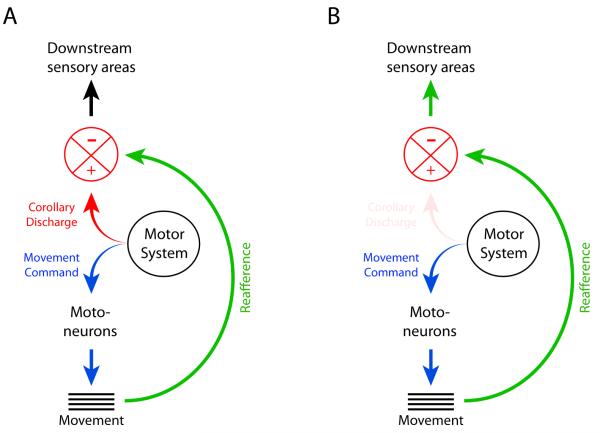Figure 1.
Hypothetical pathways depicting the sensorimotor neural networks of wake-related and sleep-related movements. (A) Conventional model representing wake-related self-generated movements. Motor systems generate motor commands that activate muscles, thereby eliciting sensory reafference (green arrow). At the same time, motor systems generate a corollary discharge (red arrow). This corollary discharge is then compared to reafference, which can result in modulation of the neural feedback before it reaches other downstream sensory areas (black arrow). (B) Proposed model for the neural circuitry involved in the generation and processing of twitches. Similar to other self-generated movements, motor systems generate motor commands that activate muscles, thereby eliciting sensory reafference (curved green arrow). Unique to twitches however, the motor systems do not generate a simultaneously produced corollary discharge, or alternatively, the corollary discharge is generated but its effects are inhibited. Because of this, reafference is not compared to corollary discharge and is therefore minimally modulated on its way to downstream sensory areas (short green arrow). Adapted from Tiriac et al., Current Biology, 2014.

